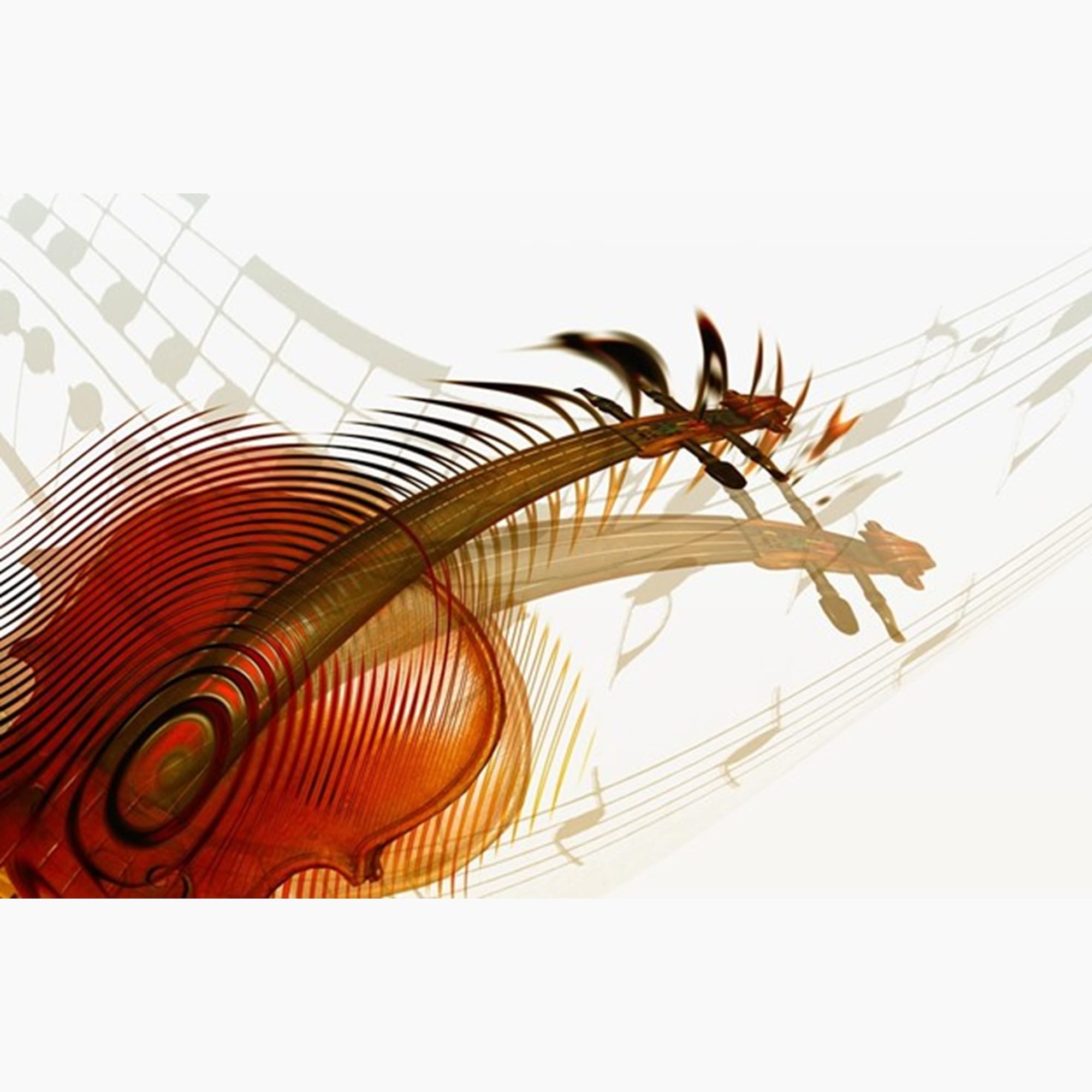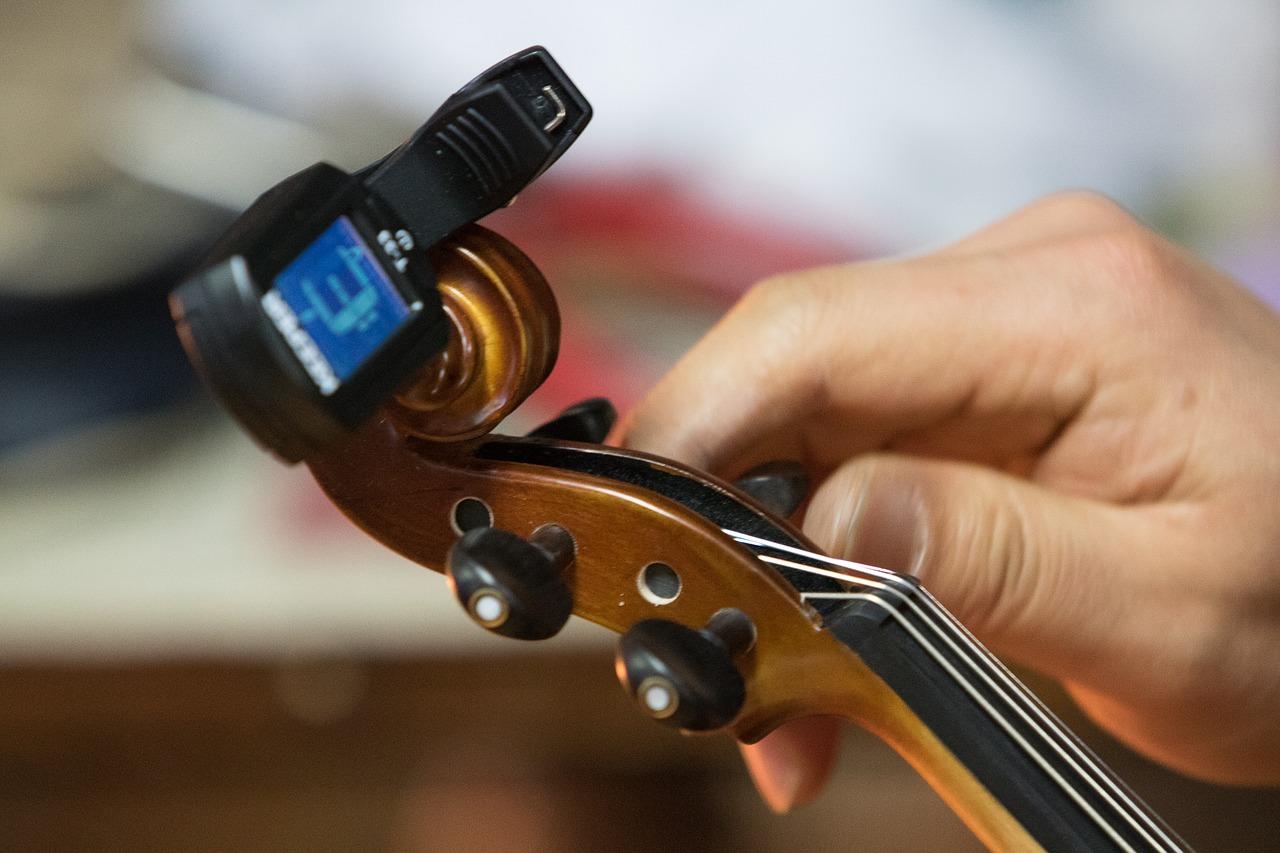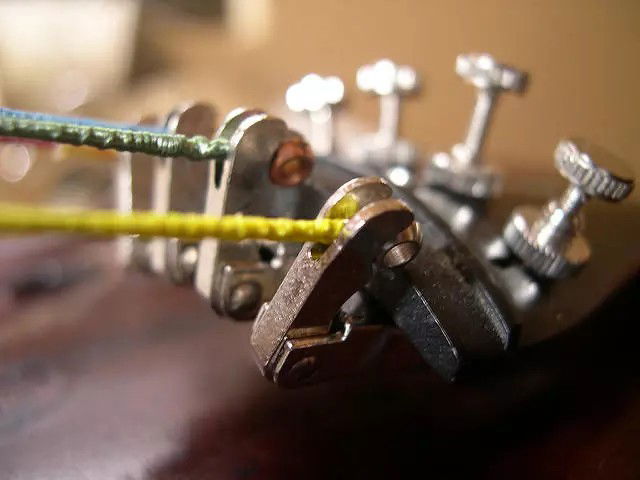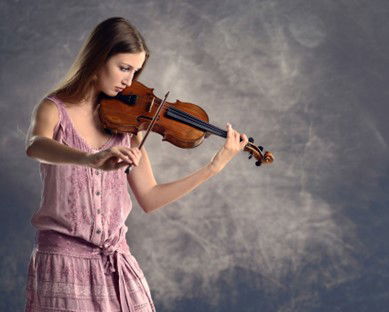How a String Orchestra Can Stay in Tune

A well-tuned string orchestra creates a rich, harmonious sound that enhances the beauty of the music. However, achieving perfect intonation can be challenging, as string players must rely on their ears and finger placement rather than fixed tuning such as is found on a piano or fretted instruments like a guitar. Here are some essential steps a string orchestra can take to stay in tune. The first one is how to GET in tune. The rest deal with how to STAY in tune, especially when rehearsing or performing.
1. Start with Proper Instrument Tuning Before playing together, musicians must ensure their instruments are correctly tuned. Unlike wind or brass instruments, string players can adjust each string individually using fine tuners or pegs. Most orchestras tune to A=440 Hz, using a tuning fork, a piano, or an electronic tuner.
Another important thing that must be addressed is the set-up of the instrument. The strings must be properly strung, the bridge must be in the right place, at the right angle, and the tuning pegs must be at the proper angle, relative to the head of the instrument. Also, players must remember to turn the tuning pegs only a small amount when doing coarse tuning.
For violinists, strings are tuned to the A string first since it is their primary reference note; it must match the frequency to which the A is assigned, most commonly the A=440 Hz. After matching it approximately to an external reference such as a tuning fork or electronic tuner, the process involves proceeding to tune G, D, and E strings relative to A. For violists and cellists, the process also starts with the A string, even though it’s in a different relative position to the rest of the strings on the instrument.
The strings on violins, violas and cellos are all a perfect fifth apart. Strings on a double bass are only a fourth apart, like the bottom four notes of a guitar, except an octave lower.
Before a discussion of how to tune, it must be emphasized that the absolute best way to tune a stringed instrument (or any tunable instrument for that matter) is by ear. There is a wide array of on-line instructions about how to tune with an electronic tuner or app. These are very helpful for someone learning how to tune, but they become a stumbling block rather than a useful crutch for real musicians. If the player cannot hear that the instrument is out of tune, how would he or she be able to tell if the part is being played properly or not.
Here are the proper steps for tuning an orchestral stringed instrument:

- STEP ONE – The first step is called coarse tuning, which involves turning the pegs to bring each string close to its desired pitch. As a string player’s skill improves, the turning pegs will be able to be turned smoothly without causing strings to slip or break.
Play the A string to hear the tone, either by bowing or plucking. Bowing is the preferred method, and is done usually by more seasoned players. Once the A string is in tune, play a double stop of the A string and a neighboring string. Listen to hear if it a perfect fourth apart. If not, adjust the tuning peg a bit at a time to bring it as close to being in tune as possible. Remember that, beside the A string, the notes don’t have to be in perfect tune. The strings will be brought into perfect pitch with the fine tuners.

- STEP TWO – The second is to do the fine tuning. Once all the strings are roughly in tune, you then switch to using the fine tuners to adjust subtle differences in tension until each string matches the exact frequency where it should be.
The musician should be able to identify what a perfect fifth sounds like. This is where the electronic tuners can help; but be very careful not to depend on them! They can also produce tunings that aren’t quite exact for a stringed instrument.
Also, the musician’s ear should be able to hear and identify what are called “beats”, which are oscillations heard when two notes are slightly out of tune. These will disappear when the pitches align perfectly. The ability to detect beats requires well-trained ears developed through years of practice. There are quite a few YouTube videos that demonstrate this phenomenon, and once you hear it, you’ll be able to tell if the instrument is truly in tune or not.
So, you don’t just tune each string individually; you also need to check intervals between adjacent strings to ensure perfect fifths.
To do this, play double stops (two strings at once) such as G-D, D-A, and A-E pairs and listen for consonance without wavering beats. This process is crucial because even if a single string sounds in tune against a reference note, it might clash with neighboring strings if improperly tuned.
- STEP THREE – Harmonizing Across All Strings
After you’re sure that there are perfect fifths between pairs of strings, you need to perform broader checks by playing various double stops and chords across two, three and/or four strings simultaneously.
This well-rounded approach helps identify subtle discrepancies that might not be noticeable when checking intervals alone. Adjustments are made accordingly using fine tuners.
- STEP FOUR – Rechecking the Reference Note
When you adjust the tension on one string it often affects other strings slightly due to changes in overall instrument tension and bridge pressure. Because of this, it’s wise to return to their primary reference note (A) multiple times during the tuning process. You may need to re-tune it as needed until all four strings are stabilized correctly.
As rehearsal or a performance progresses, you may need to re-tune as needed. Strings can shift out of tune due to changes in temperature, humidity, or prolonged playing.
2. Develop a Strong Ear for Intonation
Unlike wind instruments that have fixed keys or holes, string players must place their fingers precisely to produce the correct pitch. Developing a good ear is crucial for maintaining accurate intonation.
These exercises can be done as a group, during sectional rehearsals, or as part of each musician’s individual practice. The first two require the musician to be able to identify by ear whether the note being played is either in tune with the drone tone or the proper interval, such as a major second, major or minor third, perfect fourth or fifth.
For inexperienced to advanced beginning players, it would help to have some audio sample of what these intervals sound like when played properly. In addition, it would be helpful to have audio samples of what the “beats” sound like when two different instruments (here, a drone and a string) are sounded together.

- Practice with a drone, which is a sustained reference pitch. The internet is full of recordings of these drone tones. This can be done in two major ways.
FIRST – The musicians can listen for perfect fifths, fourths, and octaves. This helps ensure that these important intervals are correctly placed.
SECOND – The musicians can play smaller intervals, scales, or passages along with a drone helps train the ear to hear and adjust pitch naturally. It’s also helpful if a small variety of the musicians try to create “beats” by playing slightly out of tune, just so they can tell when and how they happen.
- Record and listen back – Hearing their own playing can help musicians recognize intonation issues and make adjustments. Record individual musicians as well as individual sections and small cross-section ensembles (one or two each of each of the parts). Critique of the recordings by the players as well as the listeners should be academic and constructive.
A WORD ABOUT RECORDING. The recording function of cell phones and computers with built-in microphones is horrible! It is highly recommended that you use a consumer grade digital recorder that is designed for music. They are very affordable (about $200 US at the time of this writing). Also, use speakers of some quality for playback. Any speakers that are “built-in” are generally useless for good music playback. The reason to be so finicky is that many things that should be heard, would be missing, such as the cello and double bass, the higher frequencies that would make the violin and viola distinguishable, and the “beats” that would signal a player that he or she was out of tune.
3. Use Finger Placement Guides (For Beginners)
For younger or less experienced players, fingerboard stickers or markings can help reinforce proper note placement. However, players should gradually develop muscle memory and ear training to play in tune without visual aids.
It may seem that this suggestion should be listed closer to the beginning of the article. However, the finger placement guides would be of no use if the students didn’t know what they represented and what their purpose was. Students could be introduced to the larger intervals by ear, and then play them using the placement guides so that they can hear if what they are playing matches what they just heard.

4. Maintain Good Bowing and Left-Hand Technique A player's technique greatly affects intonation. It’s also important for musicians to warm-up before playing so that not only will the following suggestions be done easily, but also that the rest of the body can be in shape to play well and pain-free. While doing these, it’s important to concentrate on keeping slow, fluid movements and breathing consistently throughout any stretching routine. Here are the categories of the warm-ups that should be done:
- Neck/Shoulder Movements
- Elbow Movements
- Wrist and Finger Movements
Once the musicians have warmed up well, they can focus on these ways to maintain good bowing and left-hand technique:
- Steady bow pressure and speed – Uneven bowing can create a wobbly tone that affects pitch perception.
- Relaxed left-hand position – Tension in the fingers or wrist can cause inaccurate finger placement, leading to poor intonation.
- Consistent finger pressure – Pressing too hard or too lightly can alter the pitch slightly.
5. Blend Within Sections and the Full Ensemble Each section (violins, violas, cellos, and basses) must match their pitch with each other, ensuring a unified sound. Players should:
- Listen to the principal player – The section leader sets the tuning standard for the group.
- Match vibrato width – Wide or inconsistent vibrato can affect perceived pitch. Players should aim for a unified vibrato style.
- Balance dynamics – Playing too loudly or softly can change the way intonation is perceived, so a controlled volume helps maintain tuning stability.
Both vibrato width and dynamics affect what is called psychoacoustics, the way that the human hear perceives sound, no matter how it actually is. A simple, but extreme, example is how a ten-year-old may honestly perceive a scolding by a parent or teacher, done at a conversational volume, as “yelling”. Even thought the volume wasn’t truly loud, the tone of voice was different. So, too, different elements of music can affect the perceived intonation of a player by a listener.
6. Practice Slow, Tuned Scales and Chords
One of the best ways to improve tuning in an orchestra is to practice slow, carefully tuned scales and chords together.
- Play long tones – Holding notes for an extended time allows players to adjust and settle into tune.
- Tuning exercises – Playing scales and arpeggios in unison or harmony encourages listening and pitch correction.
- Play without vibrato first – Vibrato can mask intonation issues, so it's helpful to check tuning with a straight tone before adding expression.
7. Adjust Intonation Based on Key and Chords Intonation in an orchestra isn’t just about playing every note exactly in tune with a tuner. The tuning of certain notes changes depending on the key and harmonic context. This set of suggestions is best attempted by more experienced musicians.
- Just intonation for harmonies – When playing chords, the ensemble should slightly adjust notes to make them fit naturally in the harmonic series.
- Equal temperament for melodic lines – When playing solo melodies, musicians may need to use equal temperament (like a piano) to stay consistent.

8. Stay Aware of Temperature and Humidity
String instruments are highly sensitive to weather conditions. Changes in temperature and humidity can cause strings to go flat or sharp. Players should:
- Allow instruments to acclimate – Bringing the instrument into the performance space early helps stabilize tuning.
- Check tuning frequently – Small adjustments may be needed throughout rehearsals and concerts.
9. Foster a Culture of Intonation Awareness A string orchestra that values good intonation will naturally develop better tuning habits over time. Directors and musicians should:
- Encourage active listening – Players must be aware of their pitch in relation to the group.
- Give positive feedback – Instead of only pointing out mistakes, directors can highlight moments of excellent tuning to reinforce good habits.
- Make tuning a regular part of rehearsals – Consistently practicing intonation exercises will lead to long-term improvement.
Conclusion Staying in tune is a collective effort in a string orchestra. Through careful tuning, ear training, technique refinement, and section blending, an ensemble can achieve a beautiful, unified sound. By consistently practicing these principles, a string orchestra can ensure that their music is as harmonious and expressive as possible.
Salt Cellar Creations understands the beauty and power that a String Orchestra can convey and the challenge that string orchestra directors face in choosing the best music for their ensemble. SCC has a growing library of original works and arrangements to help meet the needs of string teachers and directors. Find out more about what Salt Cellar Creations has to offer for String Orchestras HERE. Explore the available music HERE.
SCC can also compose an original piece for you or do a custom arrangement for you to allow you to showcase your group. There are two ways that this can be done; one is much more affordable than the other. CONTACT US for more information. And SCC is always looking for ideas of pieces to arrange or suggestions for original pieces.
We have written and arranged music for groups not only in the US but also in Canada, the United Kingdom, France, Australia, New Zealand, and Austria. Please CONTACT US to let us know what we can do for you!